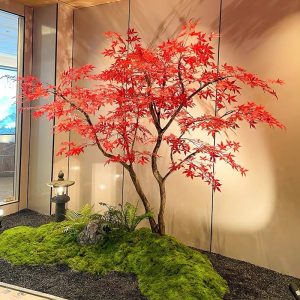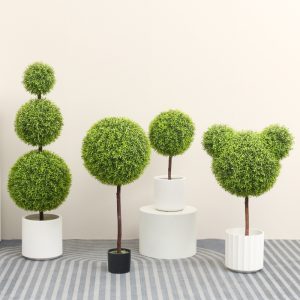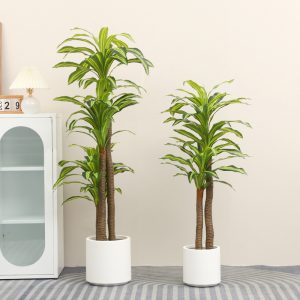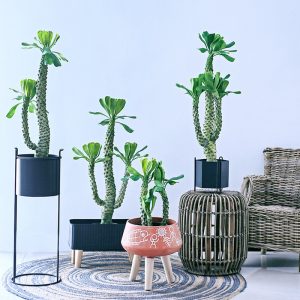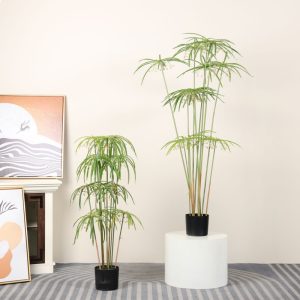Having been deeply involved in the artificial plant industry for many years, I fully understand the importance of keeping artificial plants aesthetically pleasing. Not only does this enhance the overall ambiance, but it also significantly extends the lifespan of the product. Many users, after purchasing, often find that improper cleaning leads to faded leaves or distorted shapes, which ultimately affects the decorative effect. Today, I will share my years of hands-on experience to provide a detailed breakdown of cleaning techniques and key maintenance tips for artificial plants.
1. Cleaning by Material Type: More Efficient with Targeted Treatment
Artificial plants come in various materials, and the cleaning methods differ greatly. Blindly cleaning can cause irreversible damage.
Plastic Artificial Plants
Plastic is the most common material for artificial plants. It has a smooth surface but tends to collect dust. When cleaning, first use a soft-bristled brush (such as a wool brush) to gently remove surface dust to avoid dust settling in the crevices. For stubborn stains, dilute a mild detergent (such as baby shampoo) in a 1:50 ratio with warm water and use a sponge to gently wipe. Finally, use a sponge dampened with clean water to wipe once more to prevent detergent residue that may cause discoloration. Based on observations, cleaning plastic artificial plants in this way every month can extend their lifespan by over 30%.
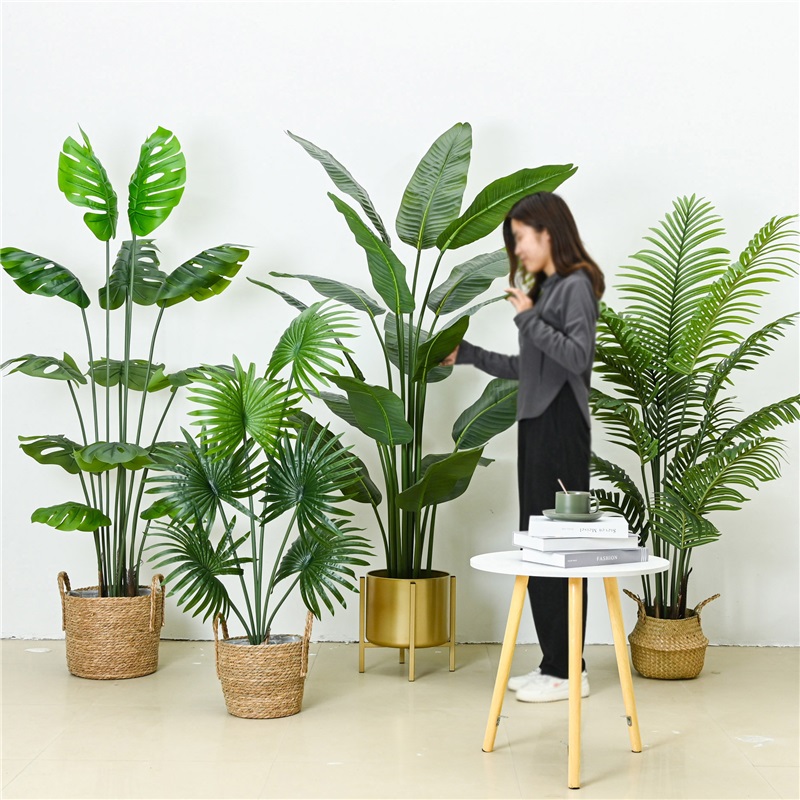
Fabric Artificial Plants
Fabric materials (such as cloth petals and leaves) are breathable but tend to attract dust and hair. They are also not water-resistant. It is recommended to use a vacuum cleaner with a brush attachment at a medium-low suction level from a distance of 10-15 cm to remove dust. For localized stains, use a cotton swab dipped in a small amount of alcohol to gently dab the stain, and once the alcohol evaporates, use a dry brush to restore the texture. Key point: Fabric materials should never be washed with water, as this can cause shrinkage and fading.
Silicone Artificial Plants
Silicone has a soft and realistic touch but easily picks up fingerprints and oil stains. To clean, simply use a slightly damp soft cloth (such as an eyeglass cloth). For heavier oil stains, apply a small amount of petroleum jelly to the cloth and wipe, then use a dry cloth to wipe clean. This will not only remove the stains but also form a protective layer on the surface, enhancing shine. Regular maintenance with petroleum jelly can improve the UV aging resistance of silicone plants by approximately 20%.
2. Core Daily Maintenance Tips: Prevention Is Better Than Cure
Choosing the Right Placement
- Avoid direct sunlight: Keep plants away from direct sunlight, especially from south-facing windows, as UV rays are the main cause of leaf fading and material brittleness. Studies show that artificial plants exposed to direct sunlight for 3 months can experience a 40% decrease in color saturation.
- Avoid strong airflow: Keep plants away from air conditioning vents, heaters, or other areas with strong airflow to prevent leaf deformation and accelerated dust accumulation.
- Rotate regularly: It’s recommended to rotate the plant 180 degrees every week to ensure even light exposure and maintain a symmetrical appearance.
Regular Dusting and Maintenance
Even if the surface looks clean, basic dusting should be done weekly:
- Small Potted Plants: Place in a plastic bag and gently shake to remove surface dust.
- Large Plants: Use a blow dryer on the cool air setting, starting from the top and blowing downwards in layers (avoid artificial soil or other decorative materials, as dust is difficult to remove once accumulated).
Special Situations
- Damp Environments (bathrooms, kitchens): Prioritize waterproof materials and use a mold-preventing spray with a small amount of tea tree oil on the surface every month to prevent mold growth.
- High Traffic Areas (malls, lobbies): Perform deep cleaning weekly, focusing on areas where dust is likely to accumulate, such as where leaves connect, and check for stains caused by frequent contact.
3. Common Pitfalls to Avoid: These Practices Are Damaging Your Artificial Plants
- Using alcohol to wipe plastic leaves: Alcohol can corrode the plastic surface, leading to roughness and loss of gloss.
- Washing fabric plants with water: Fabric materials will shrink and deform when wet, and the internal filling may clump together, ruining the overall look.
- Using hard-bristled brushes on fabric plants: Hard brushes can damage the natural alignment of the fibers, causing pilling or hair loss.
- Neglecting the gaps between leaves: Dust buildup in the gaps can breed mites, and in warm and humid environments, it can lead to unpleasant odors or mold growth.
Conclusion
Mastering the correct cleaning and maintenance methods will allow your artificial plants to remain as fresh as the first day you bought them. Through practical experience, I’ve found that artificial plants that are properly maintained not only retain their decorative effect but also maintain a 25% higher resale value. If you encounter issues with special materials (like silk or PU leather) or complex plant designs during cleaning or maintenance, feel free to leave a comment, and I’ll provide a professional solution tailored to your specific situation.








